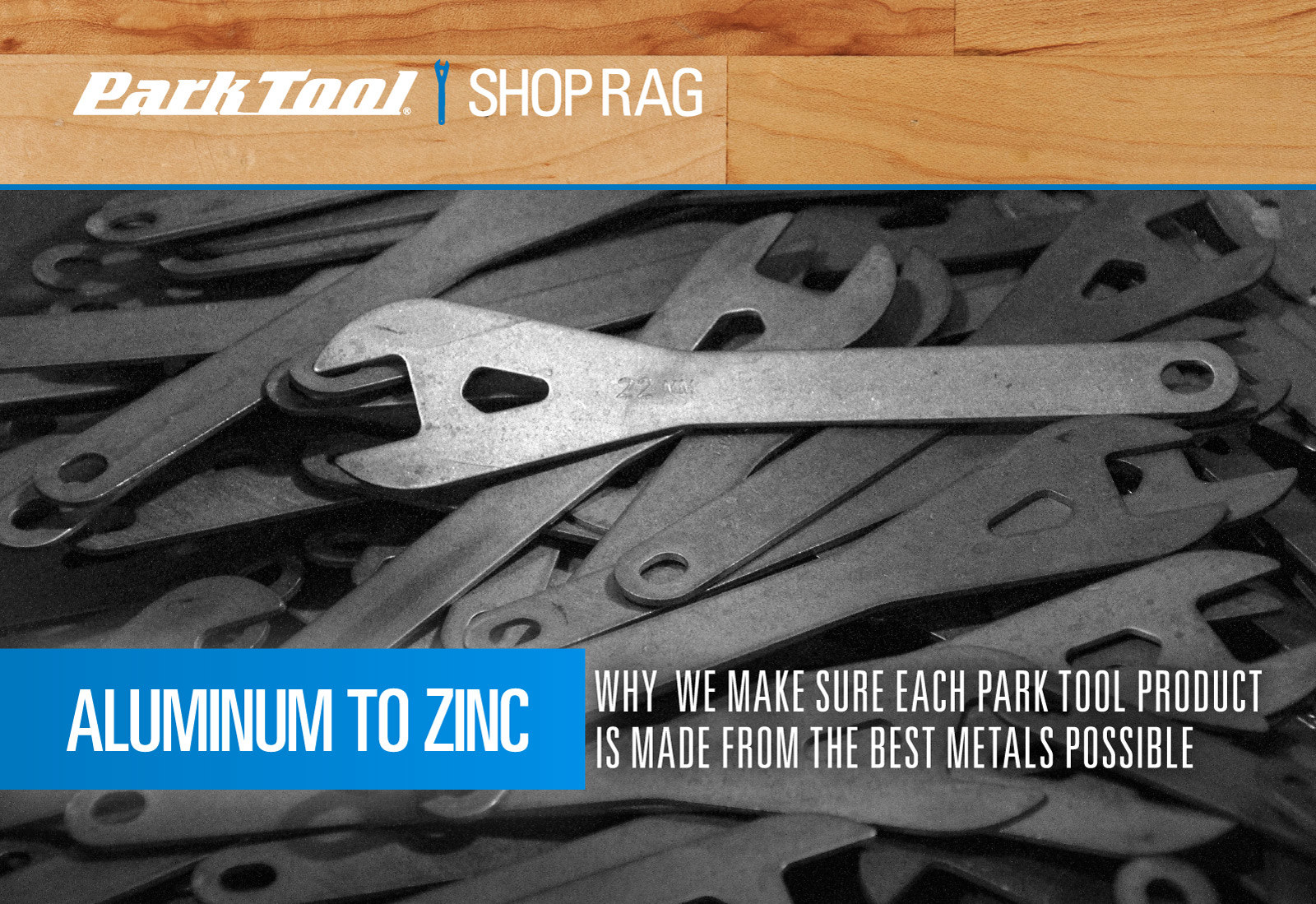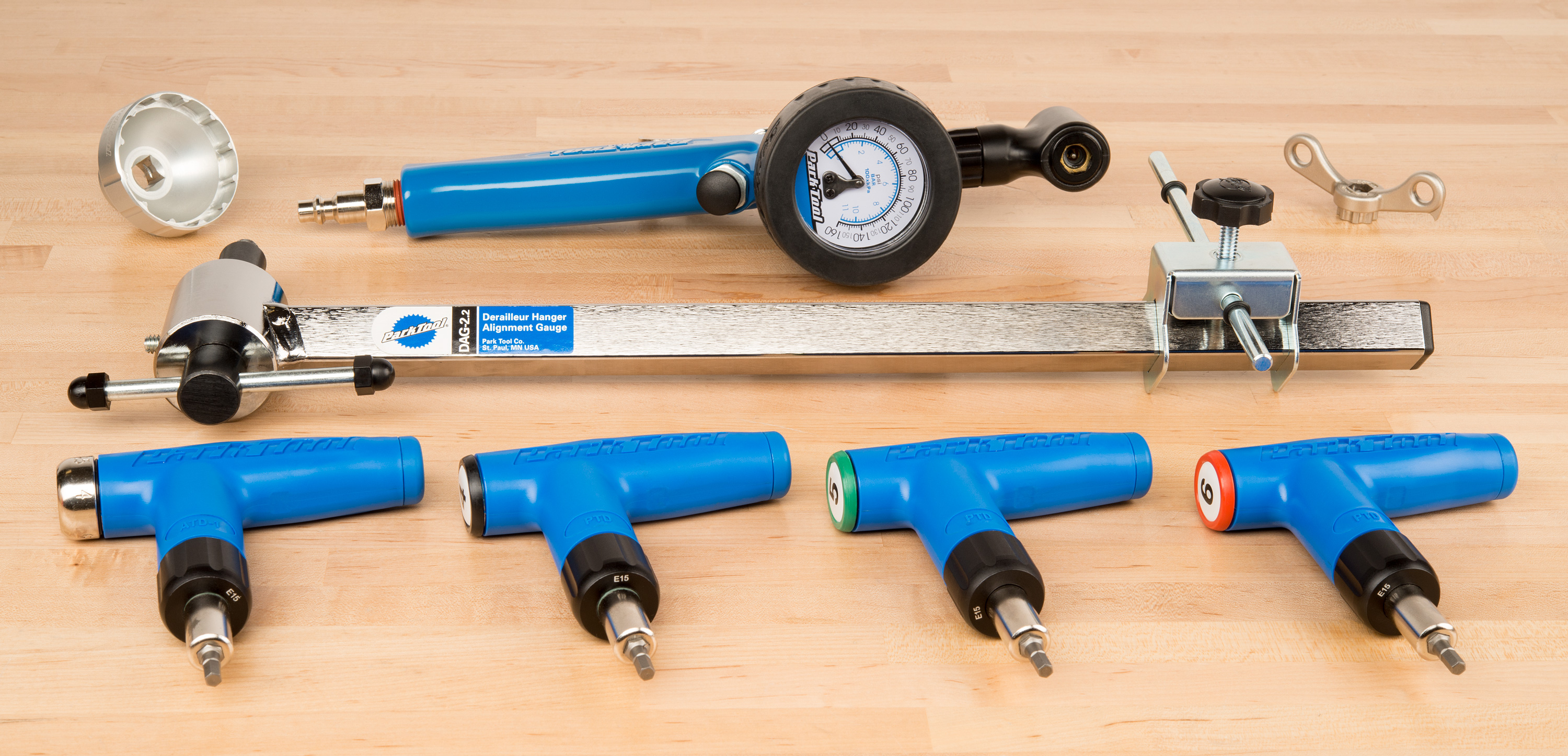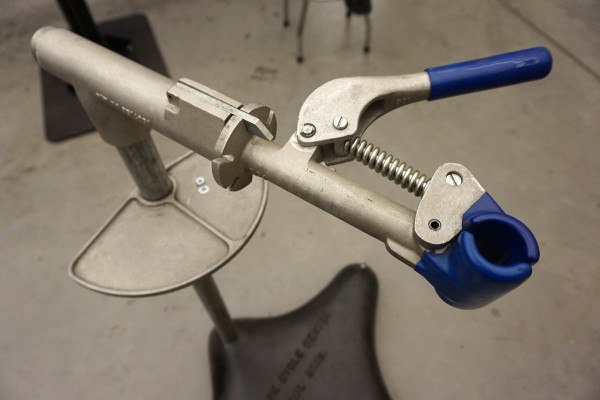Written by Alex on May 15, 2015/Shop Rag Newsletter
Shop Rag Issue 4 — Aluminum to Zinc

Material selection is one of the most important decisions in the creation of a new tool. The number of materials seen in the bike industry is a testament to the adoption of various materials and the exploitation of their unique properties for specific purposes. Just like a frame could be made of carbon, aluminum, steel or titanium (or even bamboo!) depending on its brand and performance requirements, so too can tools be made of different materials depending on their intended use. The primary materials we use are steel, aluminum and plastic composites, and making the right decision on material is critical to making the best tools available.
The most common material used to make tools is steel, but to consider steel as a single entity is far too simplistic. There are literally hundreds of different steels available, all with properties fine-tuned for various applications. We parse through the available options to select the materials that have the best blend of attributes for a specific application. Cutting tools require tool steel because it can be made hard enough to hold an edge that cuts even other steels. Wrenches require alloy steel for toughness and durability. Repair stand can use a plain carbon steel because weight is not a concern. Even these terms ‘tool’, ‘alloy’, and ‘carbon’ only define general categories, the exact compositions we use are specific and we guard our decisions closely.
Steel is not the only material in our quiver. Depending on the use of the tool we will select from a much wider assortment to find the properties we desire. If a tool needs to have a softer touch or be non-marring but still needs to transmit torque then aluminum can be a good option. Aluminum is also an excellent choice because of the variety of manufacturing processes in which it can be used. It can be machined and cast like steel, but it can also be extruded to make complex tubes and shapes that can be further machined to refine a design.
The fun doesn’t stop there though! We also employ plastics and composites in certain applications when appropriate. Plastics can be a good option for touch points, non-marring tools, guides and bushings. There are almost as many plastics available to us as there are types of steel, and we perform rigorous testing on any plastic part to ensure the material selected will perform in the application for which it was selected. Just like steel and aluminum, plastic parts can be machined from raw stock or molded directly into the shape we desire.
With such a wide variety of materials available making the right decision on material selection can literally make or break a tool. We are very proud of our developed knowledge of what materials work best for what applications, a knowledge that has been developed over 50 years and which continues to develop as new materials and manufacturing methods are developed. We take our tools as seriously as any bike manufacturer takes their bikes, and material selection is the backbone of creating the best tool for the job.
About the Author:
Max Wunderlich spent 10 years as a bike mechanic before finishing his degree in Mechanical Engineering. He has been designing bike tools for the last three years, using his first-hand experience as a mechanic to make fixing bikes easier for everyone. When it comes to bikes, he’ll ride anything but will tell you everything is more fun once you get dirty.
 Eight New Park Tool Products for Summer 2015
Eight New Park Tool Products for Summer 2015
As bikes continue to evolve, so do the tools that are required to maintain them. Being on the forefront of bicycle technology has helped make Park Tool a world leader in bicycle repair products. For Summer 2015, we are proud to announce the addition of eight new tools to our product line. These innovative new tools will help professional and amateur mechanics everywhere tweak, tune and repair today’s sophisticated bicycles:

- ATD-1 Adjustable Torque Driver
- PTD-4 Preset Torque Driver
- PTD-5 Preset Torque Driver
- PTD-6 Preset Torque Driver
- INF-2 Inflator
- BBT-10.2 Adjusting Cap Tool
- BBT-79 46mm Bottom Bracket Tool
- DAG-2.2 Derailleur Hanger Alignment Gauge
Bike Rumor Visits Park Tool

A couple of weeks ago, Bike Rumor stopped by the Park Tool factory for a visit and got a history of bicycle tools from our own Eric Hawkins. For the interview and historic images: Read more»
